
| Version | Summary | Created by | Modification | Content Size | Created at | Operation |
|---|---|---|---|---|---|---|
| 1 | Catherine Yang | -- | 1698 | 2022-11-15 01:19:44 |
Video Upload Options
1. Introduction
William Alison "Bill" Anders (born October 17, 1933), is a retired United States Air Force Major general, former electrical engineer, nuclear engineer, NASA astronaut, and businessman. He is known for being one of the first three persons to leave low Earth orbit and travel to the Moon in Apollo 8 along with fellow astronauts Frank Borman and Jim Lovell as well as for photographing the iconic image, Earthrise. Apart from his professional and military careers, Anders was the U.S. Ambassador to Norway from 1976 to 1977 under President Gerald Ford.
2. Early Life and Education
Anders was born on October 17, 1933, in British Hong Kong, to U.S. Navy LT Arthur Anders and his wife Muriel (nee Adams) Anders.[1] The Anders family practiced Catholicism. Following Anders' birth, the family relocated from Hong Kong to Annapolis, Maryland where Anders' father began teaching mathematics at the U.S. Naval Postgraduate School. After a time, the family returned to China where Anders and his mother would escape to the Philippines following the Japanese attack of Nanking. With his mother, Anders started his journey to the Philippine Islands by troop train to Canton. While there, he and his mother stayed in a hotel 200 yards from a river the Japanese were bombing, the same river they would soon after be forced to travel in their escape.[2]
While in the United States, Anders was active in the Boy Scouts, achieving the organizations second-highest rank, Life Scout. As a teen, Anders attended St. Martin's Academy and graduated in 1951 from Grossmont High School in La Mesa, California .[3]
Following high school, Anders received an appointment to the United States Naval Academy, receiving a Bachelor of Science degree in Electrical Engineering in 1955. Upon graduation, he chose to be commissioned a Second Lieutenant in the United States Air Force . He then continued his studies, receiving a Master of Science degree in Nuclear Engineering from the Air Force Institute of Technology in 1962.[4] Anders completed the Harvard Business School's Advanced Management Program in 1979.[5]
3. Air Force Service and NASA Career
3.1. United States Air Force
Following graduation from the U.S. Naval Academy, Anders took his commission in the U.S. Air Force.[4] After receiving his pilot wings in 1956, he served as a fighter pilot in all-weather interceptor squadrons of the Air Defense Command in California and in Iceland, where he participated in early intercepts of Soviet heavy bombers who at the time were challenging America's air defense borders.[4] While at the Air Force Weapons Laboratory in New Mexico, he was responsible for technical management of nuclear power reactor shielding and radiation effects programs.[5]
3.2. NASA
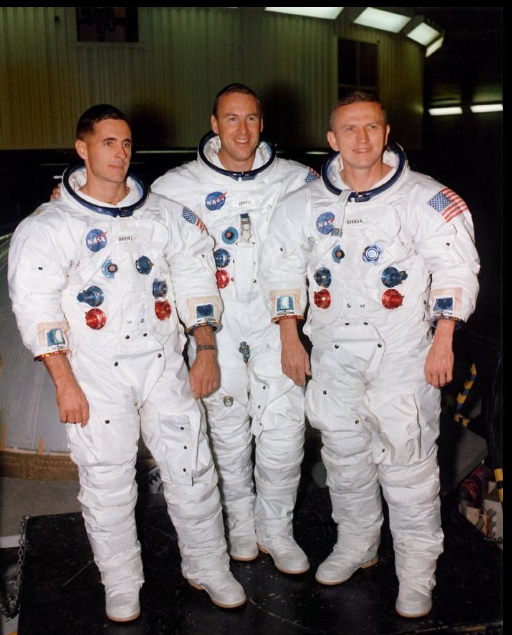
In 1963, Anders was selected by NASA in the third group of astronauts.[5] While at NASA, he became involved in dosimetry, radiation effects, and environmental controls.[5] He was the backup pilot for the Gemini 11 mission.[5] Then in December 1968, he flew as Lunar Module Pilot for the Apollo 8 mission, the first mission where humans traveled beyond Low Earth orbit.[5] This flight was the first to reach the Moon and also the first to orbit the Moon. Anders took a celebrated photograph of an Earthrise. He served as the backup Command Module pilot for the Apollo 11 mission, before accepting an assignment with the National Aeronautics and Space Council, while maintaining his astronaut status.[5]
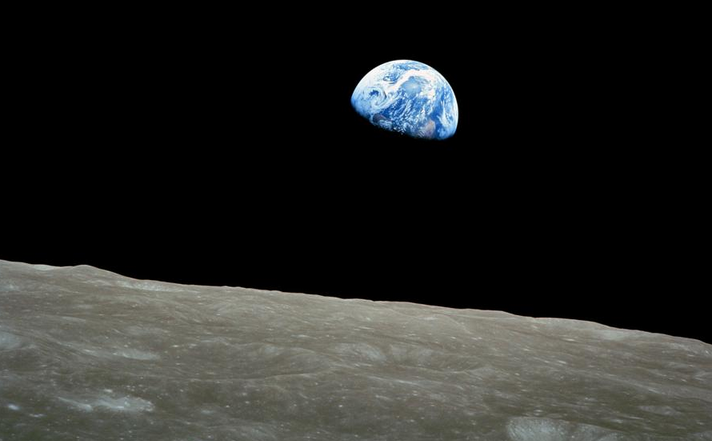
4. Post-NASA Career
From 1969 to 1973, Anders served as Executive Secretary for the National Aeronautics and Space Council, which was responsible to the President, Vice President and Cabinet-level members of the Council for developing policy options concerning research, development, operations and planning of aeronautical and space systems.[5]
On August 6, 1973, Anders was appointed to the five-member Atomic Energy Commission, where he was lead commissioner for nuclear and non-nuclear power R&D. He was also named as U.S. Chairman of the joint U.S./USSR technology exchange program for fission and fusion power.[5]
Following the reorganization of national nuclear regulatory and developmental activities on January 19, 1975, Anders was named by President Ford to become the first chairman of the newly established Nuclear Regulatory Commission, which is responsible for nuclear safety and environmental compatibility. At the completion of his term as NRC chairman, Anders was appointed Ambassador to Norway and held that position until 1977. He then ended his career with the federal government after 26 years and began work in the private sector.[5]
Anders briefly served as a fellow of the American Enterprise Institute, then joined General Electric (GE) in September 1977. As Vice President and General Manager of GE's Nuclear Products Division in San Jose, California, he was responsible for the manufacture of nuclear fuel, reactor internal equipment, and control and instrumentation for GE boiling-water reactors at facilities located in San Jose and Wilmington, North Carolina. He also oversaw GE's partnership with Chicago Bridge and Iron for making large steel pressure vessels in Memphis, Tennessee. In August 1979, Anders began attending Harvard Business School's Advanced Management Program. On the first day of 1980, Anders was appointed General Manager of the GE Aircraft Equipment Division. Headquartered in Utica, New York, the division included more than 8,500 employees in five locations in the northeastern U.S. Its products included aircraft flight and weapon control systems, cockpit instruments, aircraft electrical generating systems, airborne radars and data processing systems, electronic countermeasures, space command systems, and aircraft/surface multi-barrel armament systems.[5]
In 1984, he left GE to join Textron as Executive Vice President for aerospace, and two years later became Senior Executive Vice President for operations.[5] In 1990, Anders became Vice Chairman of General Dynamics, and on January 1, 1991, its chairman and Chief Executive Officer (CEO). He retired in 1993, but remained Chairman until May 1994.[5]
Anders was a consultant to the U.S. Office of Science and Technology Policy, and was a member of the Defense Science Board and the NASA Advisory Council. He is a retired Major General in the Air Force Reserve Command .[5]
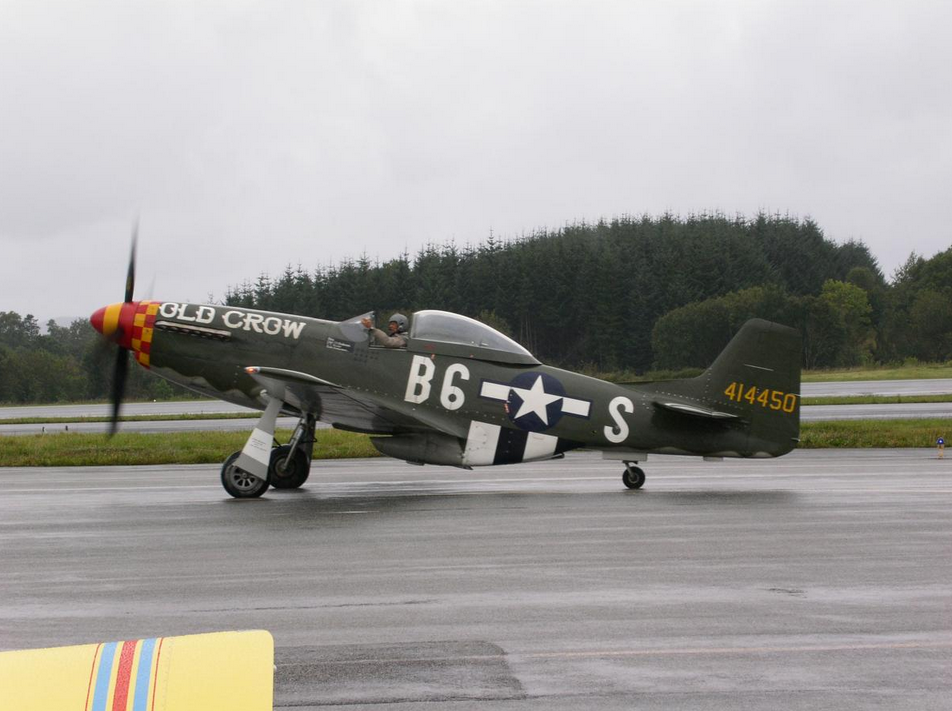
He established the William A. Anders Foundation, a philanthropic organization dedicated to supporting educational and environmental issues. The foundation was a primary sponsor of the American Experience episode "Race to the Moon." The foundation also founded the Heritage Flight Museum in 1996 in Bellingham, Washington; Museum moved to Skagit Regional Airport in Burlington, WA in 2014; Anders serves as its President and until 2008 was an active participant in its air shows.[8]
The Anders crater on the Moon is named in his honor.[8]
In 2011, Anders spoke at the first Starmus Festival in the Canary Islands, delivering a lecture on the early American space program. His talk was published in the book Starmus: 50 Years of Man in Space.[9]
5. Organizations
Anders is a member of Tau Beta Pi National Engineering Honor Society, American Nuclear Society, American Institute of Aeronautics and Astronautics, and Society of Experimental Test Pilots.[5]
6. Personal Life
Anders married Valerie Hoard in 1955.[5] Together, they have six children: Alan (born in 1957), Glen (born in 1958), Gayle (born in 1960), Gregory (born in 1962), Eric (born in 1964), and Diana (born in 1972). Anders continues to be active with the Heritage Flight Museum his charity founded, including flying vintage aircraft owned by the foundation at various airshows and aviation exhibitions. From his Air Force career on, Anders has logged more than 8,000 hours of flight time.[4] Anders and his wife reside in Anacortes, Washington.[2][10]
7. Awards and Honors
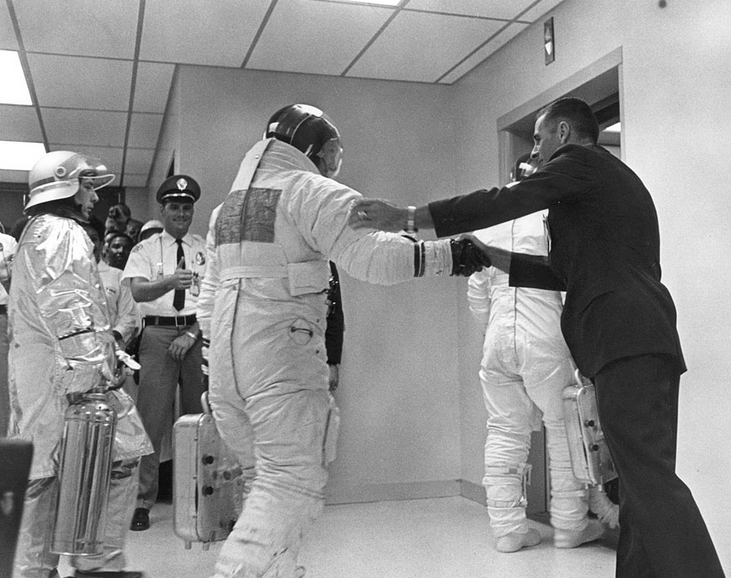
- Air Force Distinguished Service Medal[5]
- Air Force Commendation Medal[5]
- NASA Distinguished Service Medal[5]
- Nuclear Regulatory Commission Distinguished Service Medal[5]
- National Geographic Society's Hubbard Medal for Exploration[5]
- Collier, Harmon, Dr. Robert H. Goddard and General Thomas D. White USAF Trophies[5]
- American Astronautical Society's Flight Achievement Award[5]
- Inducted into the International Space Hall of Fame (1983)[7]
- Inducted into the International Air & Space Hall of Fame (1990)[11]
- Inducted into the U.S. Astronaut Hall of Fame (1997)[12]
- American Defense Preparedness Association's Industry Leadership Award (May 1993)[5]
- Inducted into the National Aviation Hall of Fame[13] (2004)
- In October of 2018, the International Astronomical Union named a crater seen in the Anders' photo as "Anders' Earthrise".[14]
8. In Popular Culture
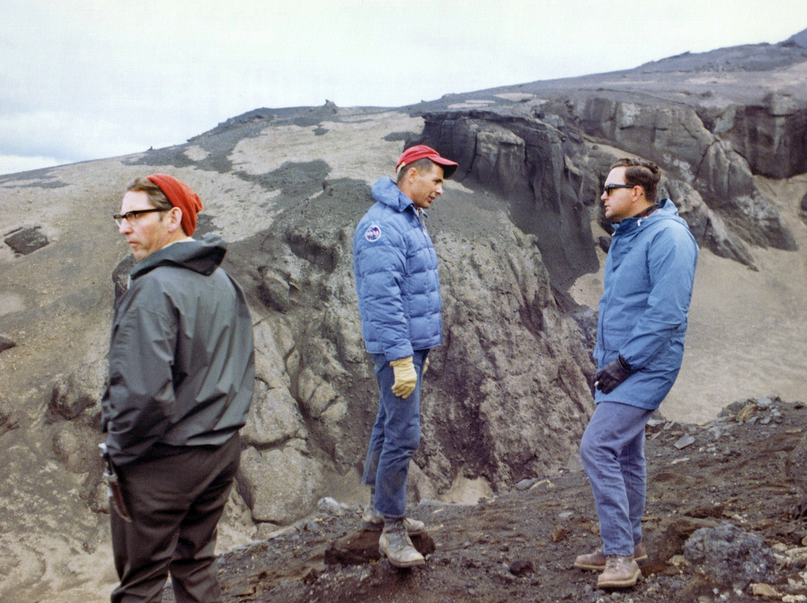
Anders was portrayed by Robert John Burke in the 1998 HBO miniseries From the Earth to the Moon.[15]
A recording of Anders,[16] made during the Apollo 8 lunar orbit, on December 24, 1968, reading from the Bible (Genesis, Chapter 1) is included on the first track ("In The Beginning") of the Mike Oldfield album The Songs of Distant Earth, with verses repeated again in the second track "Let There Be Light".[17] This recording is also sampled in VNV Nation's Genesis, the seventh track on their Futureperfect album.[18]
Anders also appeared in the 2005 documentary Race to the Moon, which was shown as part of the PBS American Experience series. The film, renamed in 2013 as Earthrise: The First Lunar Voyage, centered on the events that led up to NASA's Apollo 8 mission.[19]
Anders is interviewed in a chapter of the book No More Worlds to Conquer by Chris Wright. The chapter is roughly evenly split between his life in Apollo and his later corporate life. The book's front cover is the famous Earthrise image taken by Anders.[20]
Anders appeared with fellow NASA astronauts Frank Borman and Jim Lovell on the C-Span book review, Rocket Men. He confirmed the story that he had fallen asleep while awaiting the Apollo 8 launch.[21]
References
- Pace, Eric (2000-08-31). "Arthur F. Anders, 96, Hero Aboard U.S. Gunboat in 1937". The New York Times. https://www.nytimes.com/2000/08/31/us/arthur-f-anders-96-hero-aboard-us-gunboat-in-1937.html. Retrieved 2012-11-08.
- Freeze, Di (April 1, 2007). "Bill Anders: A Love of Afterburners". http://airportjournals.com/bill-anders-a-love-of-afterburners/.
- Newland, James (2010). La Mesa. Arcadia Publishing. p. 109. https://books.google.com/books?id=PRksOR9pNHYC&pg=PA109.
- "Maj. Gen. William A. Anders". http://heritageflight.org/mission/biographies/maj-gen-william-a-anders/.
- "William A. Anders (Major General, USAF Reserve, Ret.)". December 2014. http://www.jsc.nasa.gov/Bios/htmlbios/anders-wa.html.
- "Remarks by the President at the National Academy of Sciences Annual Meeting". April 27, 2009. Archived from the original on June 3, 2015. https://web.archive.org/web/20150603020923/https://www.whitehouse.gov/the_press_office/Remarks-by-the-President-at-the-National-Academy-of-Sciences-Annual-Meeting.
- "Lunar Module pilot on Apollo 8, the first mission to circumnavigate the Moon". New Mexico Museum of Space History. http://www.nmspacemuseum.org/halloffame/detail.php?id=71.
- ""The First Earthrise" Apollo 8 Astronaut Bill Anders recalls the first mission to the Moon". http://www.museumofflight.org/News/2267/quotthe-first-earthrisequot-apollo-8-astronaut-bill-anders-recalls-the-first.
- "Starmus Festival and Stephen Hawking Launch the Book 'Starmus, 50 Years of Man in Space'". September 7, 2014. http://www.prnewswire.co.uk/news-releases/starmus-festival-and-stephen-hawking-launch-the-book-starmus-50-years-of-man-in-space-274263251.html.
- "Skagit County Property Tax, Anders Bill; Anders Valerie". 2013-04-22. https://www.skagitcounty.net/Search/Property/.
- Sprekelmeyer, Linda, editor. These We Honor: The International Aerospace Hall of Fame. Donning Co. Publishers, 2006. ISBN:978-1-57864-397-4.
- "U.S. Astronaut Hall of Fame". http://astronautscholarship.org/astronauts/astronaut-hall-of-fame/.
- "Come With Us to Washington DC for the induction of the Class of 2018! - National Aviation Hall of Fame" (in en-US). http://www.nationalaviation.org.
- Schulz, Rita. "Lunar craters named in honor of Apollo 8" (in en). International Astronomical Union. https://www.eurekalert.org/pub_releases/2018-10/iau-lcn100518.php. Retrieved 7 October 2018.
- James, Caryn (April 3, 1998). "Television Review; Boyish Eyes on the Moon". The New York Times. https://www.nytimes.com/1998/04/03/movies/television-review-boyish-eyes-on-the-moon.html.
- "1968 Apollo 8 reading Genesis". 1968-12-24. https://www.youtube.com/watch?v=J_hRRiXKdqc. Retrieved 2014-01-31.
- Arthur C. Clarke (1994). The Songs of Distant Earth (Mike Oldfield vinyl LP cover). Warner Music UK Ltd. 4509-98581-1.
- http://www.whosampled.com/sample/134120/VNV-Nation-Genesis-Apollo-8-Genesis-Reading-Apollo-8-Genesis-Reading/
- Kertscher, Kevin Michael (October 20, 2005). "The Making of 'Race to the Moon': Apollo 8 Documentary Producer Tells All". http://www.space.com/1696-making-race-moon-apollo-8-documentary-producer-tells.html.
- "Anders' Game". June 2015. http://www.euromoney.com/Article/3459178/Anders-game.html.
- "Rocket Men'". April 2018. https://www.c-span.org/video/?443079-2/rocket-men.
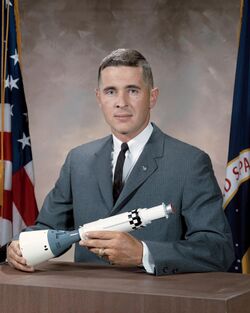
Location: British Hong Kong




